Artificial intelligence (AI) is all the rage – and it has also become a big, baggy buzzword.
While a single term for the sake of simplifying communications is useful, it also makes it difficult to understand what on earth you’re actually supposed to do with it. The fact of the matter is that AI is far more than a single technology or thing, and it can be applied in myriad ways across a growing number of use cases. It is only by moving beyond the buzzword and discussing its application in context that its true value, and the means of achieving it, can actually be realized.

So, let’s talk about customer service.
Within the customer service space, we like to think of AI as a means to empower and enhance human intelligence. Rather than replace people outright, AI is more commonly applied to help customer service employees spend their time on higher value activities.
How does AI do this? By giving rise to relevance – the ability to allow an employee or customer to find the information they need, when they need it, in the way they desire, to solve the problem at hand.
What forms does this take? Individually tailored content recommendations that reduce the need for live interactions is one. Applied strategically, AI can help guide decision making, personalize experiences, and unlock valuable data across the enterprise — data that helps customers serve themselves and employees serve those that remain more accurately and efficiently.
How AI Can Be Applied for Relevance in Customer Service
Over the next 18 months, Salesforce predicts that 143% of service teams plan to increase their use of AI. There are a couple of ways to apply AI to achieve relevance in the service world, depending on the use case:
- Search
- Customer self-service
- Agent enablement
- Data and insights
Let’s take a closer look at each.
1. Using AI to create accurate and adaptive search experiences
We know that search is on the front line of customer service. Often, search is where customers begin their journey. If that search experience is robust—if service organizations can get people to the info they need fast—search can also be where the journey finishes.
Here are a few examples of how AI can be applied to enhance the search experience by making it truly intelligent:
- Automatically filter irrelevant results based on user profile data and past behavior. For instance, you can filter out any search results for products the customer doesn’t own or use.
- Suggest queries based on the characters the person has entered or what they’ve clicked on during that session. This not only helps people articulate their query, but it can also generate additional queries they might not have thought of yet.
- Present unified search results in a single setting that is actually indexing multiple content databases and sources (YouTube, Google Drive, and Salesforce, for three common examples).
Finally, intelligent search powered by AI is self-learning and self-tuning. Machine learning and usage analytics data can be used to automatically boost, suggest, recommend, and promote the content most likely to answer each person’s question at a given moment in time. And this content delivery only improves as more data becomes available.
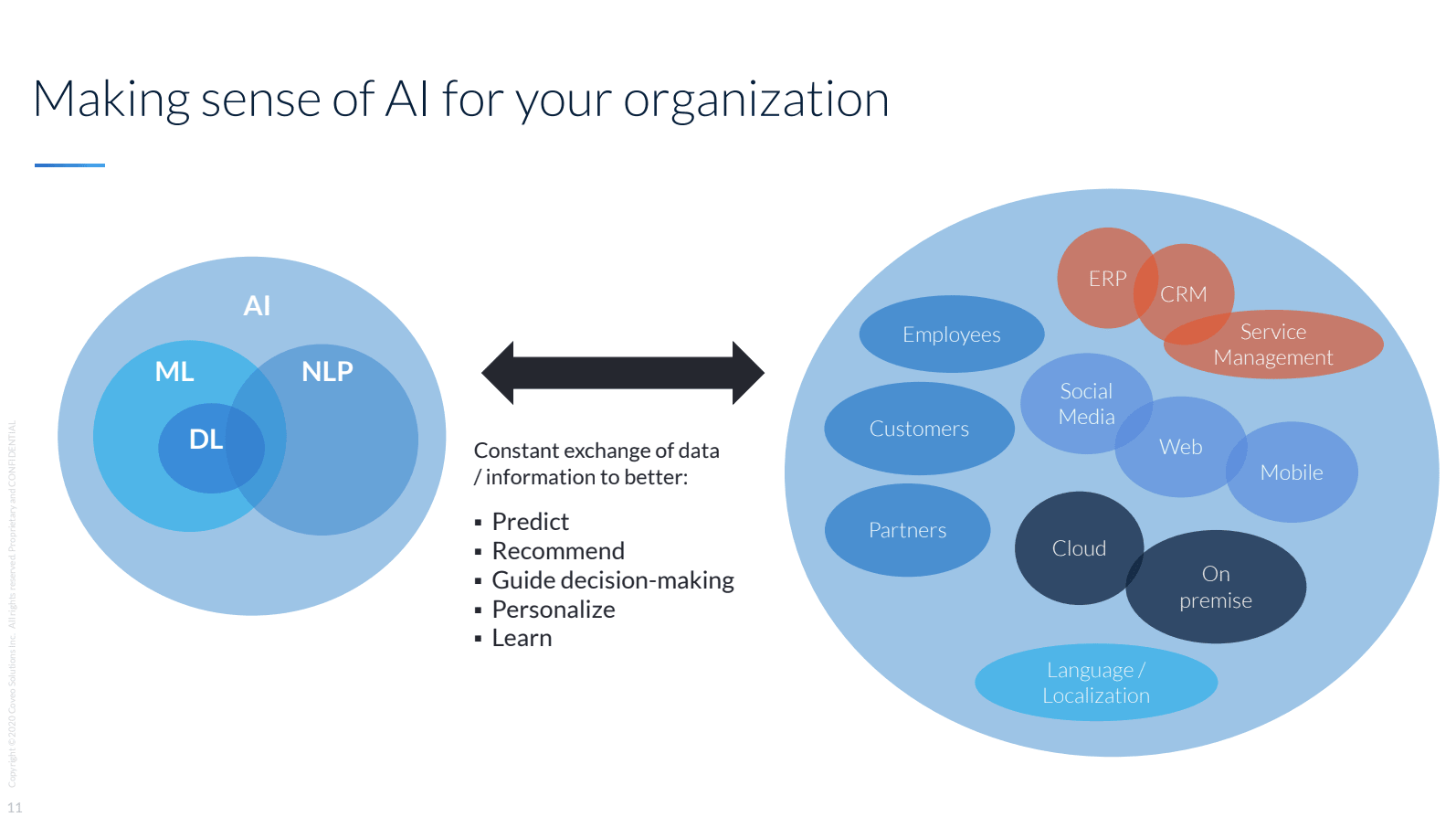
For the customer, this creates a highly optimized experience that feels proactive and personalized. For customer service teams, the level of automation involved can free up a lot of manual input and, ideally, deflect a lot of cases.
2. Creating proactive and personalized customer self-service
If given the choice, most people would choose to handle stuff on their own. This is especially true for the simple questions and issues that shouldn’t require the help of a support agent but often do.
Given this preference for self-service, it’s no wonder that 91% of organizations identify web self-service as a relevant investment focus. It’s better for customers. It’s better for support agents. And the potential cost savings can raise eyebrows. However, less than 12% of organizations have achieved anticipated ROI for self-service. And 55% of customers find web self-service portals difficult to use.
Self-service is yet another area of customer service where applying AI can be a gamechanger. First and foremost, AI can be used to detect issues before they arise and guide a customer to resolution. Your past search queries and content clicks, for example, might indicate an underlying issue that could be addressed with some suggested content.
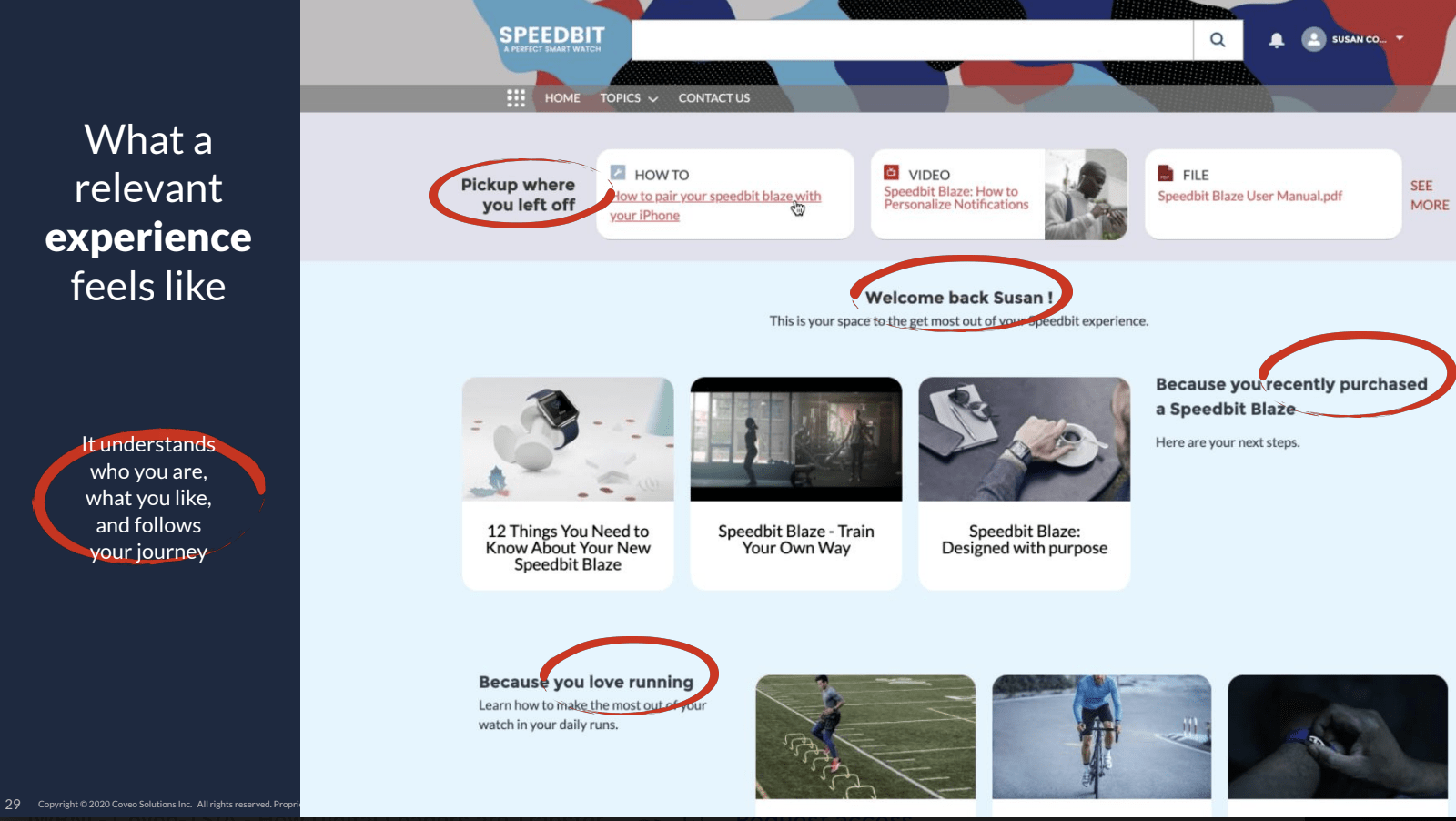
This kind of automation can be used to stitch together a highly personalized self-service experience in which content, suggestions, and related content are dynamically populated—from multiple sources—based on who you are. This might include the option to “pick up where you left off” during your last session or to read suggested articles based on a recent product purchase. AI can also be used to carry this rich context across channels. It ensures that people only see relevant information, regardless of whether they choose search, a chatbot, or some other channel for self-service.
3. Putting agents in the best position to help customers quickly
Keeping customers waiting is costly – which is why customer service agents don’t have time to spare. Unfortunately, some 56% of agents without AI spend most of their time on mundane tasks. And 51% of those agents have to waste time toggling between multiple screens to find the info they need to assist customers. At scale, these kinds of inefficiencies can add up.
To address this, agents need to be put ahead of the ball. They need to know what’s coming and be provided with the means to handle it. And there are a number of ways that AI can be used to assist the people assisting customers:
- Summarize insights on content, user actions, and affinities. An AI-powered Relevance platform can empower agents by putting rich information about a customer right at the agent’s fingertips. Who is this person I’m about to talk to? What content have they already seen or searched for? What kind of affinities does their past behavior indicate?
- Recommend content based on case data and customer journey information. AI can be used to dynamically populate and boost relevant content in real time, putting agents in the very best position to resolve the case in a couple of clicks.
- Adapt content and answers to the right channel, such as call center, support chat, or email. With AI, it’s possible to provide a relevant answer to a user query – in the manner most fitting of the channel being used. For example, an individual using a chatbot may receive a list of relevant support documents meant to answer their question, and an individual using support site search may receive a list of relevant search results. And beyond that, it’s also possible to extract and surface the most relevant portion of either set of results to the top – in the form of an informational snippet – to directly answer their question.
AI—more specifically machine learning and natural language processing—make it possible to not only automate the generation of these kinds of insights, but also to stitch them together into a single cohesive view on the agent desktop. With this information at hand, agents will always be one step ahead, able to deliver the kind of personalized and proactive service that customers have come to expect.

4. Giving service and content leaders the actionable insights they need
As important as unified, low-effort customer journeys might be, it’s also important to understand their business impact, identify trends, and reveal any gaps or room for improvement.
A content manager, for example, might be interested to know which high-volume keywords don’t return any results. A service manager or contact center director might want to monitor how many cases were submitted or deflected in the past month, as well as the dollar value associated with each.
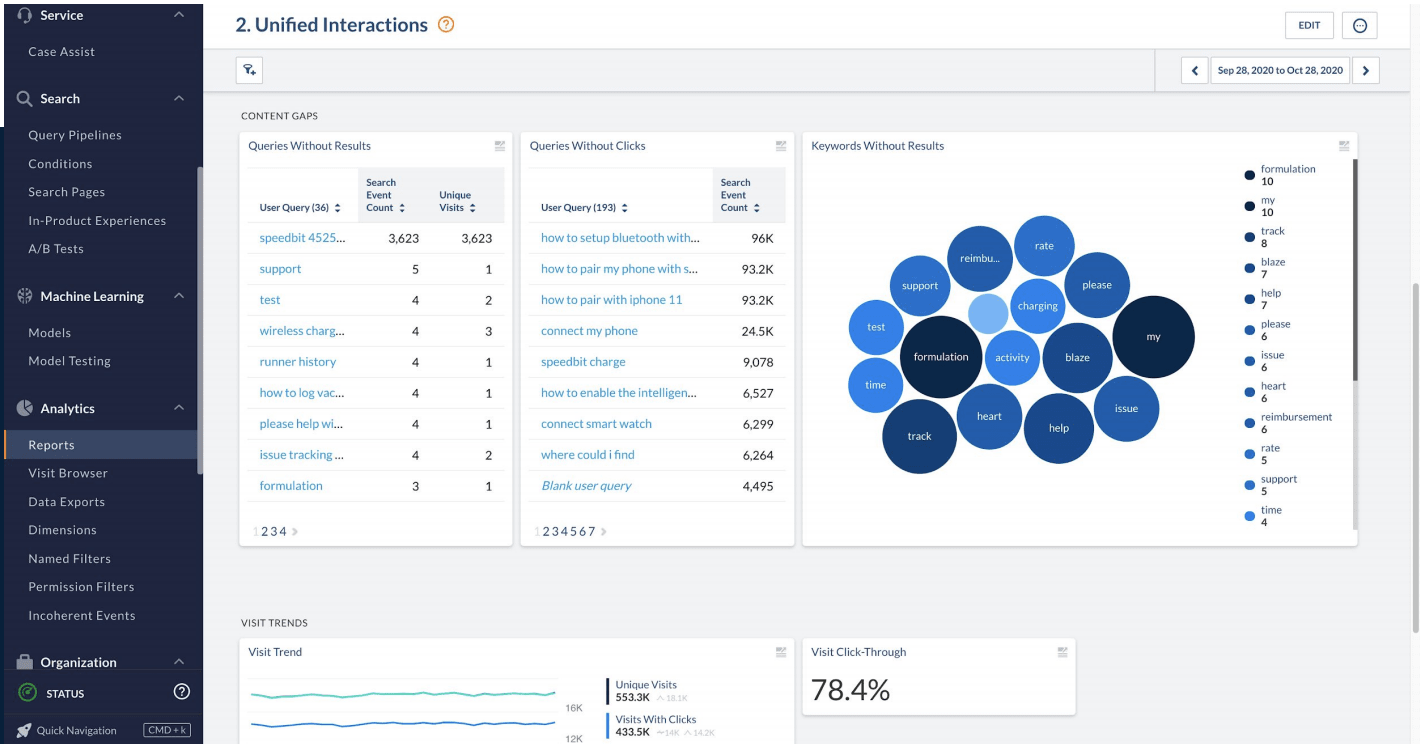
Bringing this kind of data together from across a broad customer journey, with many different service channels, is almost impossible without some kind of underlying AI support.
Going beyond what people need to what they need next
It’s this multi-faceted, broad reaching set of capabilities that makes AI such a powerful tool for customer service professionals. While many organizations might have in place some or all of the abovementioned customer service pillars, AI makes it possible to bring them all together—giving rise to what we call a unified experience.
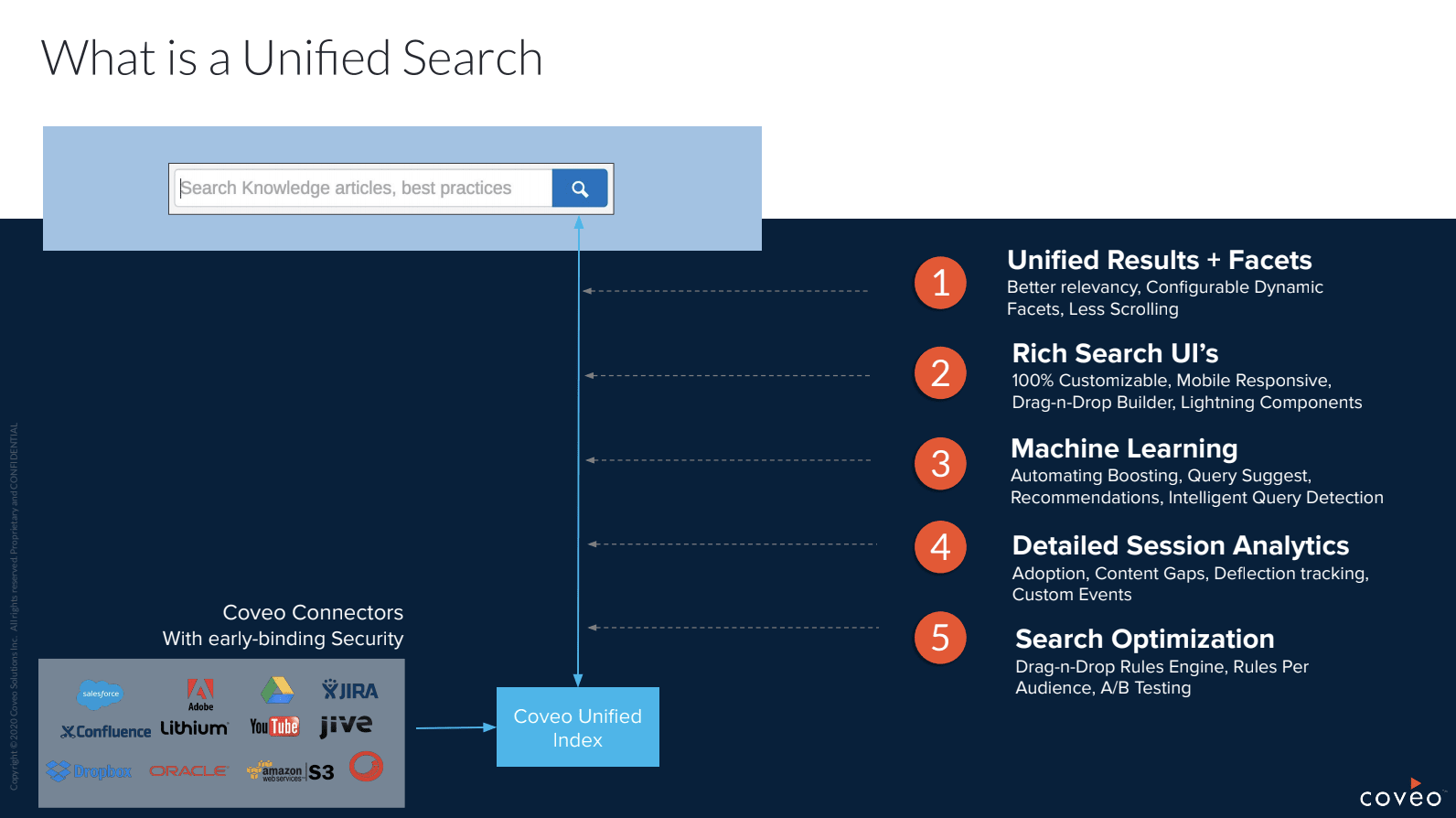
This goes beyond just providing personalized search results based on who a customer is and what they need. It involves injecting that kind of personalized relevance into every interaction, regardless of the channel, to guide customers to what they need and what they need next. When deployed in this capacity, AI has the power to be truly transformative.
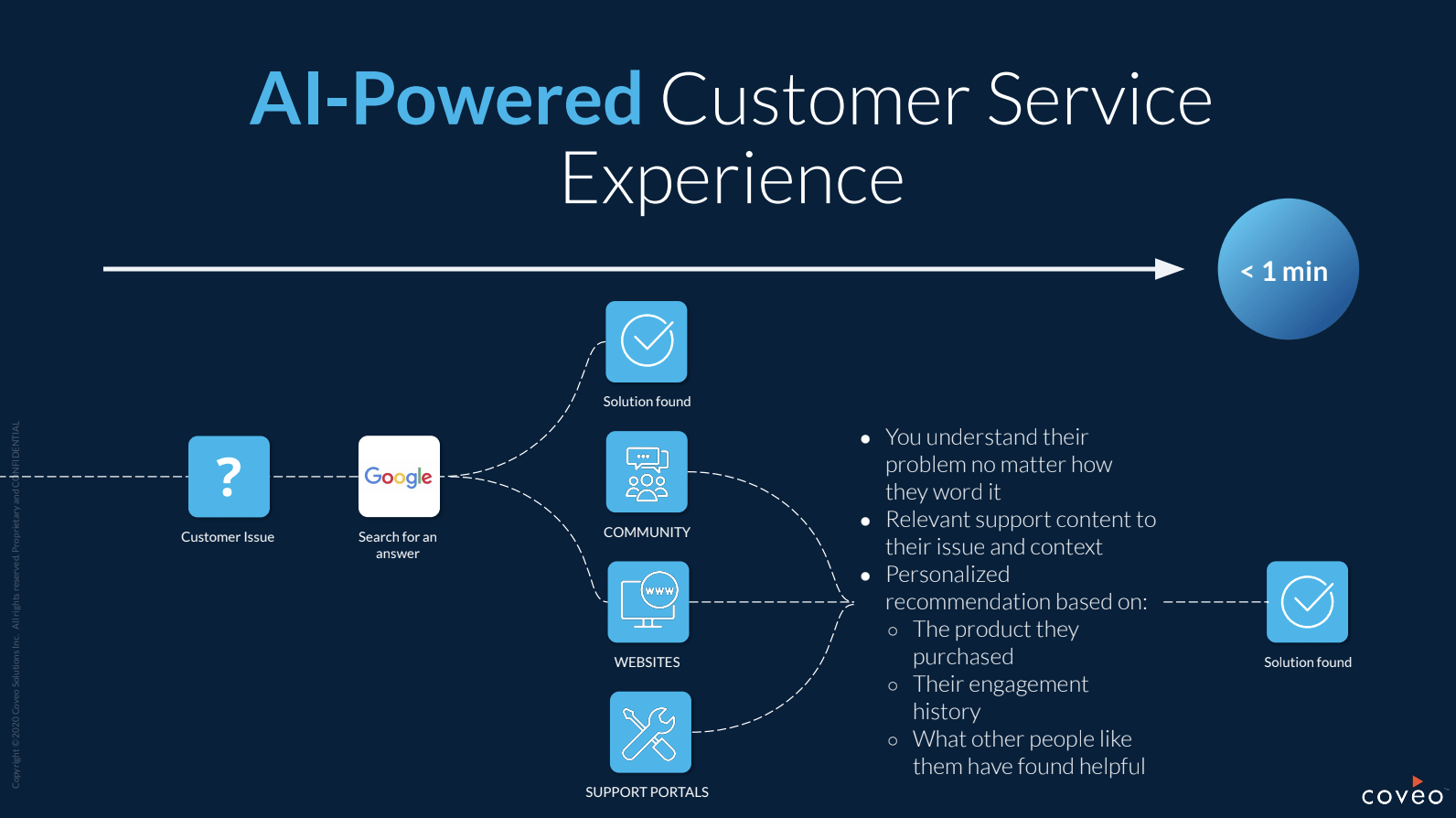
Dig Deeper
To discover how leading organizations are successfully applying AI in customer service – and to learn how you can do the same – be sure to watch How Digital Leaders are Transforming Their Customer Service with AI.
Ready to try out the smarter way to scale great outcomes and enhance your contact centers with AI-powered customer self-service? Try a Coveo trial today.


